- Submitting a case study? Email CaseStudies@DigitalTrainingAcademy.com
- Booking a course? Email Tutors@DigitalTrainingAcademy.com or call +44 (0)20 7244 9661
- Apply for a training needs assessment
Digital marketing industry case study library
Browse case studies by topic
Case studies library
- Case studies
- - Advertising
- - Ecommerce
- - Healthcare and pharmaceutical
- - Mobile marketing
- - Search
- - Social media
- - Sport
- - Travel
- - Viral
- - YouTube
- All other case studies
- Daily digital marketing news
Training services
- In-company training
- Executive coaching
- Marketing courses
- Current participants
- Graduate services
- About us
- Case study library
Consultancy and research
Social Media case studies: we currently have 509.
Any agency or media owner can submit case studies to our team and these 509 are the strongest we have received, with the most recent case studies at the top of this page. If you're interested in more digital marketing case studies then review our complete case study library. If you're interested in submitting case studies then email our case studies manager to find out more CaseStudies@DigitalTrainingAcademy.com.
Old Spice case study: How a 75-year-old brand changed digital marketing forever
Before this now-legendary social media and video campaign, Old Spice was a brand that was previously associated with old men. This case study looks at how the ‘Man Your Man Could Smell Like’ YouTube ad got 6 million YouTube views in its first week, netting the P&G brand a sales increase of 125% year-on-year in a highly competitive market dominated by Unilever’s Axe.
11/06/2011 | Full story...
Case Study: Splenda | Media: Facebook | Country: Global | Sector: FMCG - Food and drink | Objective: Trend creation, buzz, purchase intent | Format: Social media
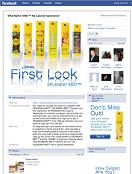 McNeil Nutritionals, a Johnson & Johnson company, was looking for the most effective way to test market Splenda Mist, a spray form of Splenda No Calorie Sweetener. In order to drive awareness among the target consumer (women 25+), facilitate sampling of and solicit feedback on the product, the Splenda Brand turned to Facebook. Splenda utilized Facebook advertising, marketing, and developer platforms to create the first-ever product launch and sampling campaign on Facebook. The resultant launch on Facebook exceeded all Brand expectations, demonstrating the power of Facebook as a highly effective tool for driving consumer engagement and feedback.
McNeil Nutritionals, a Johnson & Johnson company, was looking for the most effective way to test market Splenda Mist, a spray form of Splenda No Calorie Sweetener. In order to drive awareness among the target consumer (women 25+), facilitate sampling of and solicit feedback on the product, the Splenda Brand turned to Facebook. Splenda utilized Facebook advertising, marketing, and developer platforms to create the first-ever product launch and sampling campaign on Facebook. The resultant launch on Facebook exceeded all Brand expectations, demonstrating the power of Facebook as a highly effective tool for driving consumer engagement and feedback.
Download the case study: Splenda - Facebook | Facebook | Splenda
28/04/2010
Case Study: Sephora | Media: Facebook | Country: Global | Sector: Retail | Objective: Trend creation, buzz, purchase intent | Format: Social media
 Sephora turned to Facebook to increase brand awareness and strengthen their position as a leader in the natural and organic makeup category. The solution Facebook provided was through its Virtual Gift Engagement ad, which was a branded reusable shopping tote for users to give to their friends along with a message. Those who sent the virtual gift were awarded a promotional code they could redeem, with any Sephora.com purchase, for a real, limited edition tote bag. During the campaign, Sephora gained 10,274 new fans and orders and traffic to Sephora.com more than doubled.
Sephora turned to Facebook to increase brand awareness and strengthen their position as a leader in the natural and organic makeup category. The solution Facebook provided was through its Virtual Gift Engagement ad, which was a branded reusable shopping tote for users to give to their friends along with a message. Those who sent the virtual gift were awarded a promotional code they could redeem, with any Sephora.com purchase, for a real, limited edition tote bag. During the campaign, Sephora gained 10,274 new fans and orders and traffic to Sephora.com more than doubled.
Download the case study: Sephora - Facebook | Facebook | Sephora
28/04/2010
Case Study: Universal Pictures - Bruno | Media: Facebook | Country: Global | Sector: Entertainment | Objective: Trend creation, buzz, purchase intent | Format: Social media

Universal Studios turned to Facebook to promote the nationwide theatrical release of Bruno. By utilizing a one-day reach block to maximize reach, Bruno was able to drive significant engagement and incremental distribution in the form of organic stories inherent to the platform. They also successfully leveraged a variety of engagement ads and tools such
as Events and Pages to drive incremental awareness, engagement and distribution culminating in a “fan” base of over 700,000 users prior to the release of the film.
Download the case study: Universal Studios - Facebook | Facebook | Universal Studios
28/04/2010
Case Study: Wendy's | Media: Facebook | Country: Global | Sector: Food | Objective: Trend creation, buzz, purchase intent, brand awareness | Format: Social media
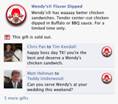 Wendy’s wanted to increase awareness and drive excitement around the launch of their new ‘Flavour Dipped Chicken Sandwich’ in October 2008. The solution was provided by Facebook in the form of an engagement ad: the virtual gift. This allowed users to send a virtual ‘Flavour Dipped’ sandwich with a personal message underneath. The result was a boost in awareness for the brand with over 191,000 gifts given in the first week; as well as buzz creation, with discussions about ‘Wendy’s’ rising 60% while the gift was available.
Wendy’s wanted to increase awareness and drive excitement around the launch of their new ‘Flavour Dipped Chicken Sandwich’ in October 2008. The solution was provided by Facebook in the form of an engagement ad: the virtual gift. This allowed users to send a virtual ‘Flavour Dipped’ sandwich with a personal message underneath. The result was a boost in awareness for the brand with over 191,000 gifts given in the first week; as well as buzz creation, with discussions about ‘Wendy’s’ rising 60% while the gift was available.
Download the case study: Wendy's - Facebook | Facebook | Wendy's
28/04/2010
Case Study: Lionsgate - Saw V | Media: Facebook | Country: Global | Sector: Entertainment | Objective: Trend creation, buzz, purchase intent | Format: Social media
 Lionsgate wanted to drive awareness and intent to the film Saw V by advertising on Facebook. The solution Facebook provided was to build a fan page, create an event for the opening weekend of the film, and allowed users to become a ‘fan’ of the film. Finally they created a virtual ‘Jigsaw’ gift that lived on the recipient's wall and spread through news feeds. The results were clear, with 43,000 Facebook users becoming ‘fans’ of the film and the phrase “Saw V” on Facebook walls increased over 18 times during the campaign
Lionsgate wanted to drive awareness and intent to the film Saw V by advertising on Facebook. The solution Facebook provided was to build a fan page, create an event for the opening weekend of the film, and allowed users to become a ‘fan’ of the film. Finally they created a virtual ‘Jigsaw’ gift that lived on the recipient's wall and spread through news feeds. The results were clear, with 43,000 Facebook users becoming ‘fans’ of the film and the phrase “Saw V” on Facebook walls increased over 18 times during the campaign
Download the case study: Lionsgate - Facebook | Facebook | Lionsgate
28/04/2010
Case Study: French Connection - FCUK | Media: MSN | Country: UK | Sector: Clothing | Objective: Brand awareness, brand repositioning, buzz | Format: In-game advertising
![]() In-game advertising on the Massive network provided the genuine buzz needed to establish FCUK as a leading fashion brand for young men. Previously used as a campaign slogan by clothing brand French Connection, the big rises in awareness and word-of-mouth recommendation delivered by the campaign helped to establish FCUK as a brand in its own right.
In-game advertising on the Massive network provided the genuine buzz needed to establish FCUK as a leading fashion brand for young men. Previously used as a campaign slogan by clothing brand French Connection, the big rises in awareness and word-of-mouth recommendation delivered by the campaign helped to establish FCUK as a brand in its own right.
Download the MSN case studies compendium
26/04/2010
Case Study: Life Chats | Media: MSN | Country: Greece | Sector: IT telecommunications | Objective: Brand awareness, brand repositioning, buzz | Format: Social media
![]() An anarchic Messenger agent, dedicated to showing up the shortcomings of traditional emoticons, sparked a rapid-growing revolution in the way Greek users chat online. “Face” did more than boost interest in the LifeCams and LifeChats range of webcams and headsets. Short-tempered and frequently hilarious, he was soon a star of the most popular Greek blogs with his own Facebook following.
An anarchic Messenger agent, dedicated to showing up the shortcomings of traditional emoticons, sparked a rapid-growing revolution in the way Greek users chat online. “Face” did more than boost interest in the LifeCams and LifeChats range of webcams and headsets. Short-tempered and frequently hilarious, he was soon a star of the most popular Greek blogs with his own Facebook following.
Download the MSN case studies compendium
26/04/2010
Case Study: Festival | Media: MSN | Country: Columbia | Sector: FMCG - Food and drink | Objective: Purchase intent, buzz, engagement | Format: Social media
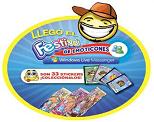 The chance to design their own emoticon kept tweens clicking on the cookie brand’s Windows Live Messenger tab, with over 306 million hits helping to drive a 35 per cent increase in sales.
The chance to design their own emoticon kept tweens clicking on the cookie brand’s Windows Live Messenger tab, with over 306 million hits helping to drive a 35 per cent increase in sales.
Download the MSN case studies compendium
26/04/2010
Case Study: Coca-Cola | Media: MSN | Country: Coca-Cola | Sector: FMCG - Food and drink | Objective: Engagement, click through, integration, purchase intent | Format: Video, social media
![]() A spectacular two-stage campaign across a range of Microsoft Advertising channels turned Coca-Cola’s popular ‘Happiness Factory’ ad into an online cinema event with a nation-wide community following and spectacular engagement levels. With over 13 million ad impressions, double-digit click-through rates and 600,000 downloads, there was a lot of happiness to go around.
A spectacular two-stage campaign across a range of Microsoft Advertising channels turned Coca-Cola’s popular ‘Happiness Factory’ ad into an online cinema event with a nation-wide community following and spectacular engagement levels. With over 13 million ad impressions, double-digit click-through rates and 600,000 downloads, there was a lot of happiness to go around.
Download the MSN case studies compendium
26/04/2010
Case Study: H&M | Media:MSN | Country: Norway | Sector: Clothing | Objective: Engagement, buzz, cut-through, trend creation | Format: Social media

A bold campaign from H&M in co-operation with Costume magazine and MSN was created to engage fashion bloggers in Norway. The brand’s fashion blogging contest drew a fantastic response rate, with 700 bloggers taking part from across the country, and acted as the centrepiece of a successful integrated campaign.
Download the MSN case studies compendium
23/04/2010
Case Study: Ford | Media: MSN | Country: Denmark | Sector: Automotive | Objective: Brand awareness, brand repositioning, purchase intent | Format: Social Media, Design
 A bold, content-driven campaign, in which young women auditioned to present Fashion TV online drove Ford’s image makeover and helped to position the Fiesta as Denmark’s next top auto model.
A bold, content-driven campaign, in which young women auditioned to present Fashion TV online drove Ford’s image makeover and helped to position the Fiesta as Denmark’s next top auto model.
Download the MSN case studies compendium
23/04/2010
Case Study: Armed Forces Day | Agency: Worth | Country: UK | Sector: Events | Objectives: Brand awareness, buzz | Format : Social media
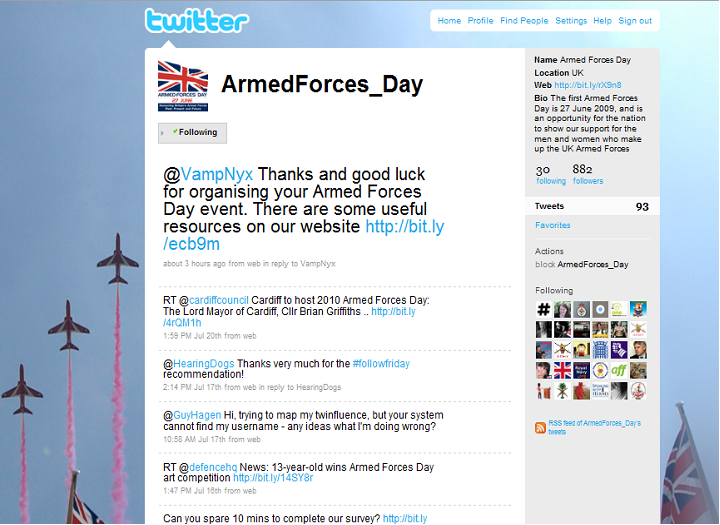 Worth harnessed the burgeoning power of social media to improve the UK public’s support and awareness for Armed Forces Day and encourage a celebration of the forces, veterans and wider forces family, to honour the work they do. Worth's use of digital to create highly engaging content and development of spaces where communities could grow and flourish has allowed them to mature into meaningful places of support and an overall increase in positive participation.
Worth harnessed the burgeoning power of social media to improve the UK public’s support and awareness for Armed Forces Day and encourage a celebration of the forces, veterans and wider forces family, to honour the work they do. Worth's use of digital to create highly engaging content and development of spaces where communities could grow and flourish has allowed them to mature into meaningful places of support and an overall increase in positive participation.
Post campaign research has shown www.armedforcesday.org.uk had over 180,200 website visits between 1st April and 7th of July 2009. There was an unprecedented growth in the Facebook fans from 4,000 in late May to just over 100,000 by 26th June, with a joining rate of more than 3 people per second up to the 100,000th membership. The membership rate continues to grow, soon to reach its 200,000th member. Nearly 13,000 people signed up to the AFD mailing list – with over 9,000 receiving free window stickers to spread the campaign message further and over 6,000 leaving a message of support. Further, 6,295 photos were uploaded into the Flickr photo gallery by fans from 2009 events.
Worth Armed Forces Day on Twitter Armed Forces Day on Facebook
20/01/2010 | Full story...
Case study: Brandcast Media | Agency: Random42 | Country: UK | Sector: Pharma | Objectives: Targeting, engagement | Format: Online educational tools, Video
European cancer research is of a very high quality but is fragmented, un-coordinated and slow in translating benefits to patients. If state of the art treatment was available to all cancer patients, the World Health Organisation has estimated that over 20,000 lives would be saved annually. Targeted at oncology professionals, ecancermedicalscience actively encourages the communities of sub-specialised scientists and cancer carers to exchange ideas and research, speeding up the time it takes from discovery, to patient benefit. The peer-reviewed, online journal hired Brandcast Media to revamp its site. The site now includes social media with blogs, forums and a Twitter feed, as well as podcasts and an ecancer.tv video section.
09/11/2009
Case Study: Promoting sport to haemophiliacs | Agency: Oi Media and Langland | Country: UK | Sector: Pharma | Objectives: Brand awareness | Format: Games, user generated content, forums
About 6,000 people are affected with haemophilia in the UK. A preventative treatment (known as prophylaxis) allows those affected to lead virtually normal lives, with sport and exercise playing a vital role lessening the risk of bleeds. Bayer HealthCare hired Oi Media and Langland to create FactorFitness, a website giving haemophiliacs tips on how to get the most out of sport, while educating others on special requirements needed, such as the dedicated ‘Teachers Zone’. By far the most popular area of the site, the ‘Ask and expert’ feature lets people submit questions to resident physio and occupational therapists- providing a valuable resource. The site has a number of interactive features such as games and user generated photo galleries, while patients on Bayer get access to a special members area.
www.factorfitness.co.uk
09/11/2009
Case Study: Moonfruit’s Twitter contest | Sector: Online Media | Objective: Buzz, trend creation | Format: Social media
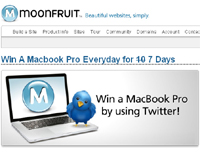 For its tenth birthday, web hosting company Moonfruit, gave away a Macbook Pro laptop every day for ten days. To win one, users had to tweet using the hashtag #moonfruit. The result? A 350% increase in product trials, a 600% increase in traffic… and Twitter forcibly removing it from the top trending topics.
For its tenth birthday, web hosting company Moonfruit, gave away a Macbook Pro laptop every day for ten days. To win one, users had to tweet using the hashtag #moonfruit. The result? A 350% increase in product trials, a 600% increase in traffic… and Twitter forcibly removing it from the top trending topics.
The hashtag #moonfruit topped Twitter's trending lists for three days, accounting for 2.5% of all tweets at its peak. People drew pictures, made videos and sang songs about the brand in a bid to win the laptops. The secret to the success of the campaign, spearheaded by founder Wendy Tan-White, was engagement.
"The biggest surprise was the brand affinity and awareness it created. The name of the company helped a lot, because people asked what it meant. They really picked up on the message we wanted to get across. They made the brand their own and we couldn't have done that without Twitter. It creates a relationship," Tan-White said.
15/07/2009 | Full story...
Case study: Volkswagen Twitter Banner | Agency: Crispin Porter + Bogusky | Technology: MediaMind | Sector: Automotive | Objectives: Engagment, buzz, purchase intent | Format: Rich media & social media
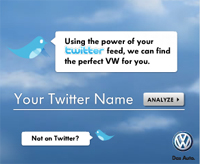 VW capture the moment by aligning their brands with the Twitter messaging tool. Using Twitter in the advert creates interest and helps VW stand out from other motor manufacturers. By typing in your Twitter name it then looks for your tweets and claims to be finding the right car for you based on your content. Behind the scenes it seems to pull language from your Twitter feed and display this within the advert. It’s a neat way of dipping into Twitter, but the real benefit here is threefold: engagement with the customer, creating the spark of talkability about the brand, and VW’s alignment with the funky microblogging platform tech trendsetters have gravitated towards.
VW capture the moment by aligning their brands with the Twitter messaging tool. Using Twitter in the advert creates interest and helps VW stand out from other motor manufacturers. By typing in your Twitter name it then looks for your tweets and claims to be finding the right car for you based on your content. Behind the scenes it seems to pull language from your Twitter feed and display this within the advert. It’s a neat way of dipping into Twitter, but the real benefit here is threefold: engagement with the customer, creating the spark of talkability about the brand, and VW’s alignment with the funky microblogging platform tech trendsetters have gravitated towards.
09/07/2009
Case study: Revels | Agency: Skive Creative | Technology: MediaMind | Sector: FMCG | Objectives: Brand positioning, purchase intent , engagement | Format: Rich media, social media, microsite & video
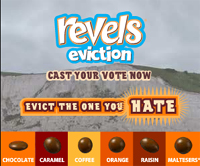 Using the idea of reality TV shows and voting for eviction, this campaign is about the idea of evicting one of the varieties of sweets. It’s a neat way of riding a current social trend with creating simple interaction within an advertising format. For fast moving consumer packaged goods brands like Revel’s, they’re not trying to sell off the page, their goal is to build brand image, discussion and front of mind awareness. That’s exactly what this creative achieves – even without deep interaction on the website.
Using the idea of reality TV shows and voting for eviction, this campaign is about the idea of evicting one of the varieties of sweets. It’s a neat way of riding a current social trend with creating simple interaction within an advertising format. For fast moving consumer packaged goods brands like Revel’s, they’re not trying to sell off the page, their goal is to build brand image, discussion and front of mind awareness. That’s exactly what this creative achieves – even without deep interaction on the website.
Download the case study: Revels | View campaign creative
09/07/2009
Case study: Pepsi Dear Mr President | Agency: R/GA | Technology: MediaMind | Sector: FMCG | Objective: Brand awareness, brand positiong, purchase intent, engagement | Format: Rich media, social media, microsite & video
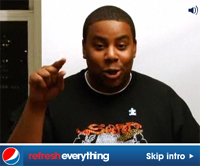 The goals for Pepsi were to bring awareness to their updated brand and logo, re-establish Pepsi’s position as a youthful challenger brand and tap into the iconic “change” social/political movement of the Obama election. They also wanted to foster brand community through 2-way communication with customers and chose the web and a social marketing model as the way to achieve this. Their ‘Refresh Everything’ message was a natural fit with Obama’s drive for change in politics and social values, and the campaign harnessed video content, social media and digital marketing in innovative ways to reach the millennial generation. The model centered around an open letter to Barack Obama and saw consumers recording their webcam messages directly from a video banner. This got them not only interacting with the banner, but actually creating content and pushing it back to the brand.
The goals for Pepsi were to bring awareness to their updated brand and logo, re-establish Pepsi’s position as a youthful challenger brand and tap into the iconic “change” social/political movement of the Obama election. They also wanted to foster brand community through 2-way communication with customers and chose the web and a social marketing model as the way to achieve this. Their ‘Refresh Everything’ message was a natural fit with Obama’s drive for change in politics and social values, and the campaign harnessed video content, social media and digital marketing in innovative ways to reach the millennial generation. The model centered around an open letter to Barack Obama and saw consumers recording their webcam messages directly from a video banner. This got them not only interacting with the banner, but actually creating content and pushing it back to the brand.
Download the case study: Pepsi Dear Mr President | View campaign creative
09/07/2009
Case study: Kellogg's Special K Map My Fitness | Sector: FMCG | Objective: Brand positioning, purchase intent | Format: Social media, strategic marketing models, web design, web analytics
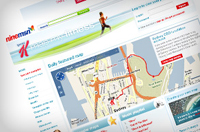 Kellogg's wanted to lift their marketing message into the lifestyle space and align themselves deeply with the values and experiences of their target consumers. They stepped above simple advertising campaigns to create a fitness platform they could own and a marketing initiative that would be integrated across many channels
Kellogg's wanted to lift their marketing message into the lifestyle space and align themselves deeply with the values and experiences of their target consumers. They stepped above simple advertising campaigns to create a fitness platform they could own and a marketing initiative that would be integrated across many channels
Download the case study: Kellogg's Special K Map My Fitness
26/06/2009
Case study: Coke Wayne Rooney | Sector: FMCG | Objectives: Brand positioning, cut-through, buzz | Format: Online media, viral marketing, social media
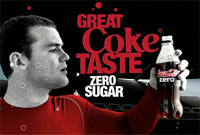 Coca-Cola needed to find a way of levering a celebrity endorsement to gain cut-through in a tough market. The brand was looking for a technique of messaging that would gain real attention, connecting to the right people and in the right way. The peer referral power of viral marketing offers this promise, but in most cases proves elusive for fast moving consumer goods firms. However, this short video starring English football star Wayne Rooney - proved compelling enough for millions of people to want to send this on. It’s the kind of connection all viral marketing sets out to make but rarely delivers.
Coca-Cola needed to find a way of levering a celebrity endorsement to gain cut-through in a tough market. The brand was looking for a technique of messaging that would gain real attention, connecting to the right people and in the right way. The peer referral power of viral marketing offers this promise, but in most cases proves elusive for fast moving consumer goods firms. However, this short video starring English football star Wayne Rooney - proved compelling enough for millions of people to want to send this on. It’s the kind of connection all viral marketing sets out to make but rarely delivers.
Download the case study: Coke Wayne Rooney | Watch the video
26/06/2009 | Full story...
Case study: Johnson & Johnson | Sector: Pharmaceutical | Objectives: Brand awareness, brand positioning, traffic generation | Format: Social media, branded content, microsite
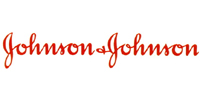 Johnson & Johnson Consumer B.V. (JJCBV) wanted to boost awareness of its o.b. tampon brand among young women in the Netherlands. Because the vast majority of Dutch women aged between 14 and 18 use Windows Live Messenger, the company worked with Microsoft Advertising to create a Personal Expression; a collection of interactive content used in the application. The hugely successful campaign increased brand usage by six percent among the target audience.
Johnson & Johnson Consumer B.V. (JJCBV) wanted to boost awareness of its o.b. tampon brand among young women in the Netherlands. Because the vast majority of Dutch women aged between 14 and 18 use Windows Live Messenger, the company worked with Microsoft Advertising to create a Personal Expression; a collection of interactive content used in the application. The hugely successful campaign increased brand usage by six percent among the target audience.
24/06/2009
Case study: Kleenex Let It Out | Sector: Pharmaceutical | Objectives: Engagement, brand positioning | Format: Social media, microsite, rich media, branded content
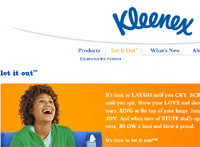 Kleenex created a new brand story called Let It Out, which focused on breaking free from inhibitions and letting out tears, laughter, joy, frustration, and all the other things we hold back. The objective was to create an emotional connection between consumers and Kleenex and a key part of this was to encourage participation in ‘letting it out’.
Kleenex created a new brand story called Let It Out, which focused on breaking free from inhibitions and letting out tears, laughter, joy, frustration, and all the other things we hold back. The objective was to create an emotional connection between consumers and Kleenex and a key part of this was to encourage participation in ‘letting it out’.
24/06/2009
Case studies: Habitat’s social media blunder and Twitter spam | Sector: Retail | Format: Social Media
 The Habitat furniture store is among many brands to have misunderstood Twitter, blundering in to a private social space with typically offline approach. Their clumsy attempt to use Twitter’s # tags was an ill thought through way to get their messaging seen by larger numbers of people. The feed from HabitatUK effectively spammed thousands of people by trying to hijack key trending topics. Hash tags help people track conversations in Twitter, and the retailer decided in June to align itself to topics such as Apple’s iphone and the Iranian elections. It suggests three sequential failures in the marketing strategy: failing to read the landscape and the way people use the tools, failing to create a digitally native strategy and failing to have management checks and controls in place to identify poor practice. Coaching the marcomms team in digital marketing would have prevented this and a clear social media policy would ensure it never happens again.
The Habitat furniture store is among many brands to have misunderstood Twitter, blundering in to a private social space with typically offline approach. Their clumsy attempt to use Twitter’s # tags was an ill thought through way to get their messaging seen by larger numbers of people. The feed from HabitatUK effectively spammed thousands of people by trying to hijack key trending topics. Hash tags help people track conversations in Twitter, and the retailer decided in June to align itself to topics such as Apple’s iphone and the Iranian elections. It suggests three sequential failures in the marketing strategy: failing to read the landscape and the way people use the tools, failing to create a digitally native strategy and failing to have management checks and controls in place to identify poor practice. Coaching the marcomms team in digital marketing would have prevented this and a clear social media policy would ensure it never happens again.
More details on the Neoco blog that broke the story | Social media best practice | Social media case studies
24/06/2009
Case study: Nokia on Facebook | Sector: Telecommunications | Objectives: Brand repositioning, buzz, trend creation | Format: Sponsorship and content integration
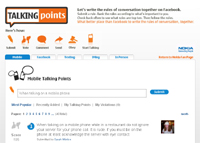 Nokia is about connecting people. The pioneers of mobile phones created the handsets a generation grew up with, and the handsets a generation learned to ‘talk’ with. So how smart and how fitting that Nokia is the brand behind an initiative for writing the rules for mobile and SMS conversations. Getting the most from a new technology isn’t about understanding the functions it’s about understanding how to behave with it. We master the functions quickly, but the behaviour takes longer and as people try out new technologies (from texting to tweeting), there’s a new type of behaviour we have to discover. So when Nokia started thinking about how people connect, it seemed only natural to let their customers do the talking. And that’s what you have right here. A great example of a wider social message, linked to a brand truth, delivered through a sponsorship, inside a community space, using social content - and along the way some great marketing. Like the strapline says, Nokia really are about ‘connecting people’.
Nokia is about connecting people. The pioneers of mobile phones created the handsets a generation grew up with, and the handsets a generation learned to ‘talk’ with. So how smart and how fitting that Nokia is the brand behind an initiative for writing the rules for mobile and SMS conversations. Getting the most from a new technology isn’t about understanding the functions it’s about understanding how to behave with it. We master the functions quickly, but the behaviour takes longer and as people try out new technologies (from texting to tweeting), there’s a new type of behaviour we have to discover. So when Nokia started thinking about how people connect, it seemed only natural to let their customers do the talking. And that’s what you have right here. A great example of a wider social message, linked to a brand truth, delivered through a sponsorship, inside a community space, using social content - and along the way some great marketing. Like the strapline says, Nokia really are about ‘connecting people’.
http://apps.facebook.com/talkingpoints
23/06/2009
Case study topics
- 1upSearch
- 20th Century Fox
- 3
- AA
- Adidas
- advertising
- advertising creative
- advertising spend
- Africa
- AIS
- AKQA
- All Nippon Airways
- analytics
- Android
- apps
- Argentina
- Army
- Asda
- Asia
- Audible
- augmented reality
- Australia
- Autobytel
- automotive
- Avis
- Axe
- banners
- Bayer Healthcare
- BBC
- behavioural targeting
- Belgium
- Ben and Jerrys
- Betfair
- Big Picture
- Blendtec
- Blink TV
- blogging
- BMW
- Bookstart
- brand awareness
- brand equity and positioning
- Brandcast Media
- Brazil
- British Airways
- British Gas
- Bruno
- Burberry
- Burger King
- Buzzfeed
- Cadburys
- Cambria Automobiles
- Canada
- Cannes Lions
- Cannon
- Carling
- Carlson
- CBI
- celebrity marketing
- Centrica
- Channel 4
- charity
- Chemistry UK
- Chile
- China
- click through
- clothing
- Coca Cola
- Colgate
- Columbia
- Compass Interactive
- consumer electronics
- consumer insight
- content marketing
- Creative Lynx
- Crispin Porter and Bogusky
- CRM eCRM and email marketing
- Croatia
- cut through
- Cyprus
- Denmark
- design
- Diageo
- digital companies
- Digital Intelligence
- digital marketing
- Digital Marketing Case Study
- Digital Training Academy
- digital trends
- direct response
- directory
- Dove
- driving traffic
- DTI
- Dynamic Logic
- easyJet
- ecommerce
- eDetail
- education
- EE
- Egypt
- EMEA
- Emirates
- energy
- engagement
- entertainment
- environment
- Europe
- experiential marketing
- Festival
- Fiat
- film
- finance
- Finland
- Fish4jobs
- FitchLive
- Flickr
- FMCG digital marketing
- Ford
- France
- French Connection
- Friends of the Earth
- FuturAd
- g8wave
- gaming and gamification
- Germany
- Gjensidige
- global
- glue London
- Golden Pages
- Google AdWords
- government
- Greece
- Greenlight
- GSK
- H and M clothing
- Habitat
- Halesway
- Handbag
- healthcare and pharmaceutical
- Heineken
- Heinz
- Hewlett Packard
- Hong Kong
- Hong Kong Tourist Board
- Incentivated
- increasing conversion
- India
- Indonesia
- ING
- Inside Mobile
- insurance
- integrated marketing
- interactive media
- Israel
- Italy
- Jaguar
- Janssen Cilag
- Japan
- Johnhson and Johnson
- Johnnie Walker
- JVST
- KDDI
- Kelloggs
- KFC
- Kimberly Clark
- Kleenex
- Kraft
- Kwik Fit
- Lacta
- Langland
- lead generation
- LEGO
- Levis Jeans
- LG
- Life chats
- Lionsgate
- Lipton
- local
- LOreal
- luxury
- Lycos
- M and C Saatchi
- MacMillan
- magazine
- Malaysia
- marketing
- Marketing Evolution
- marketing fails
- Mars
- Mazda
- McDonalds
- Mediacom
- MediaMInd
- Mentos
- Mexico
- Microsoft
- Middle East
- MMA
- mobile marketing
- Monarch
- Mondelez
- Motorola
- MSN
- music
- Nestle
- Netherlands
- NetSupport
- Netthink ES
- New Zealand
- Nike
- Nivea
- Nokia
- Norway
- Norwich and Peterborough
- Nutella
- OgilvyOne
- Oi Media
- online advertising
- online forum
- online media
- online radio
- Oodle
- Oracle
- Oreos
- Outdoor
- Palm
- pay per click advertising
- Pedigree
- Pepsi
- Periscope
- Philippines
- Pixelpusher
- Plumbworld
- podcasting
- Poland
- portal
- Portugal
- Procter and Gamble
- Profero
- publishing strategy
- purchase intent
- Qatar Airways
- QR codes
- R GA
- Radisson Edwardian Hotels
- Random42
- Reckitt Benkiser
- recruitment
- RedEye
- Reebok
- reputation management
- retail
- Revels
- rich media
- Rocksound
- Romania
- Royal Marines
- Russia
- Saatchi and Saatchi
- Sainsburys
- Samsung
- Saw V
- Schering Plough
- Schroders
- search
- search engine optimisation
- security
- Sephora
- Shell
- Singapore
- Skive Creative
- Skype
- Slovakia
- SnapChat
- Snickers
- social media
- Sonaa
- Sony
- South Africa
- South America
- South Korea
- Spain
- sport
- Sprite
- STA Travel
- Starbucks
- strategy
- Stride
- Sweden
- Switzerland
- Sympatico
- Taglab
- Taiwan
- Talk Talk
- Talk to Frank
- targeting
- TBWA
- technology
- technology and software
- Telecommunications
- Television
- Thailand
- The Body Shop
- Tourism New Zealand
- Toyota
- traffic driving
- Transport for London
- travel and tourism
- trend creation
- Tumblr
- Turkey
- TVL
- UAE
- UK
- Unilever
- Universal Pictures
- Universal Studios
- USA
- uSwitch
- Vaseline
- Vauxhall
- VeriSign
- video
- Vietnam
- Vine
- viral
- Virgin
- Visa
- Vodafone
- Volkswagen
- Volvo
- Warner Breaks
- Warner Bros
- Warner Music
- Webcredible
- William Hill
- Windows
- Windows Live Messenger
- Worth
- Yahoo
- youth marketing
- YouTube